
Roots
The coil, in its very essence, is a testament to natural design, a spiral wonder holding secrets of resilience and distinct beauty. To truly understand its needs, particularly concerning the delicate balance of pH, one must first look to the very beginnings of its structure, to the foundational elements that give it form and function. It is a journey into the hair’s own living story, an exploration of its inherent make-up.
Each strand of hair, regardless of its outward curl pattern, begins its life within the scalp, a remarkable organ that serves as its nurturing ground. The scalp itself maintains a slightly acidic environment, typically within a pH range of 4.5 to 5.5. This natural acidity, often termed the acid mantle, serves as a protective shield against bacterial and fungal proliferation, guarding the hair follicle and surrounding skin. A healthy scalp is the bedrock for healthy hair, and its pH is a silent, yet significant, partner in this well-being.

What Is Hair’s Own Protective Layer?
The hair shaft itself mirrors the scalp’s preference for acidity. The outermost layer of the hair, the Cuticle, comprises overlapping scales that lie flat when the hair is in its optimal, slightly acidic state. This smooth, closed cuticle reflects light, lending a natural sheen, and more importantly, it safeguards the inner layers of the hair from environmental stressors and moisture loss.
When this delicate balance is disrupted, perhaps by products that are too alkaline, these cuticle scales can lift, leaving the hair vulnerable, rough, and prone to dryness and breakage. This vulnerability is particularly pronounced in coily hair, where the natural twists and turns already present points of weakness along the shaft.
The scalp and hair naturally prefer a slightly acidic environment, crucial for maintaining cuticle integrity and warding off external challenges.
The unique helical shape of coily hair, with its numerous bends and turns, influences how natural oils, or sebum, travel down the hair shaft. Unlike straighter hair types where sebum can easily glide from root to tip, the coils present a more challenging path, often resulting in drier ends and a greater propensity for tangling. This inherent characteristic means that coily hair often requires additional external support to maintain its moisture levels and, by extension, its optimal pH.

Hair Anatomy and Coil Configuration
Delving deeper into the hair’s core, the Cortex, a central region made of keratin proteins, determines the hair’s strength and elasticity. In coily hair, the distribution of these proteins and the elliptical cross-section of the strand contribute to its distinct spring-like formation. This structure, while beautiful, also means that coily hair can be more fragile and susceptible to damage from mechanical stress or chemical treatments that alter its natural pH.
- Hair Follicle ❉ The small pocket in the scalp from which a hair strand grows, dictating its shape and texture.
- Cuticle Layer ❉ The outermost protective scales of the hair shaft, which open or close depending on pH.
- Cortex Structure ❉ The central, protein-rich part of the hair that gives it strength and elasticity, shaped by the coil’s pattern.
| PH Level 4.5 – 5.5 (Acidic) |
| Effect on Hair Cuticle Cuticle scales lie flat and remain closed. |
| Consequence for Coily Hair Maintains moisture, shine, and strength, reducing tangles. |
| PH Level 7.0 (Alkaline) |
| Effect on Hair Cuticle Cuticle scales lift and open. |
| Consequence for Coily Hair Increases dryness, frizz, breakage, and vulnerability to damage. |
| PH Level < 4.0 (Very Acidic) |
| Effect on Hair Cuticle Can cause excessive tightening of the cuticle, leading to stiffness. |
| Consequence for Coily Hair May result in a feeling of rigidity or lack of suppleness. |
| PH Level Understanding these pH interactions is fundamental for preserving coily hair's vitality. |
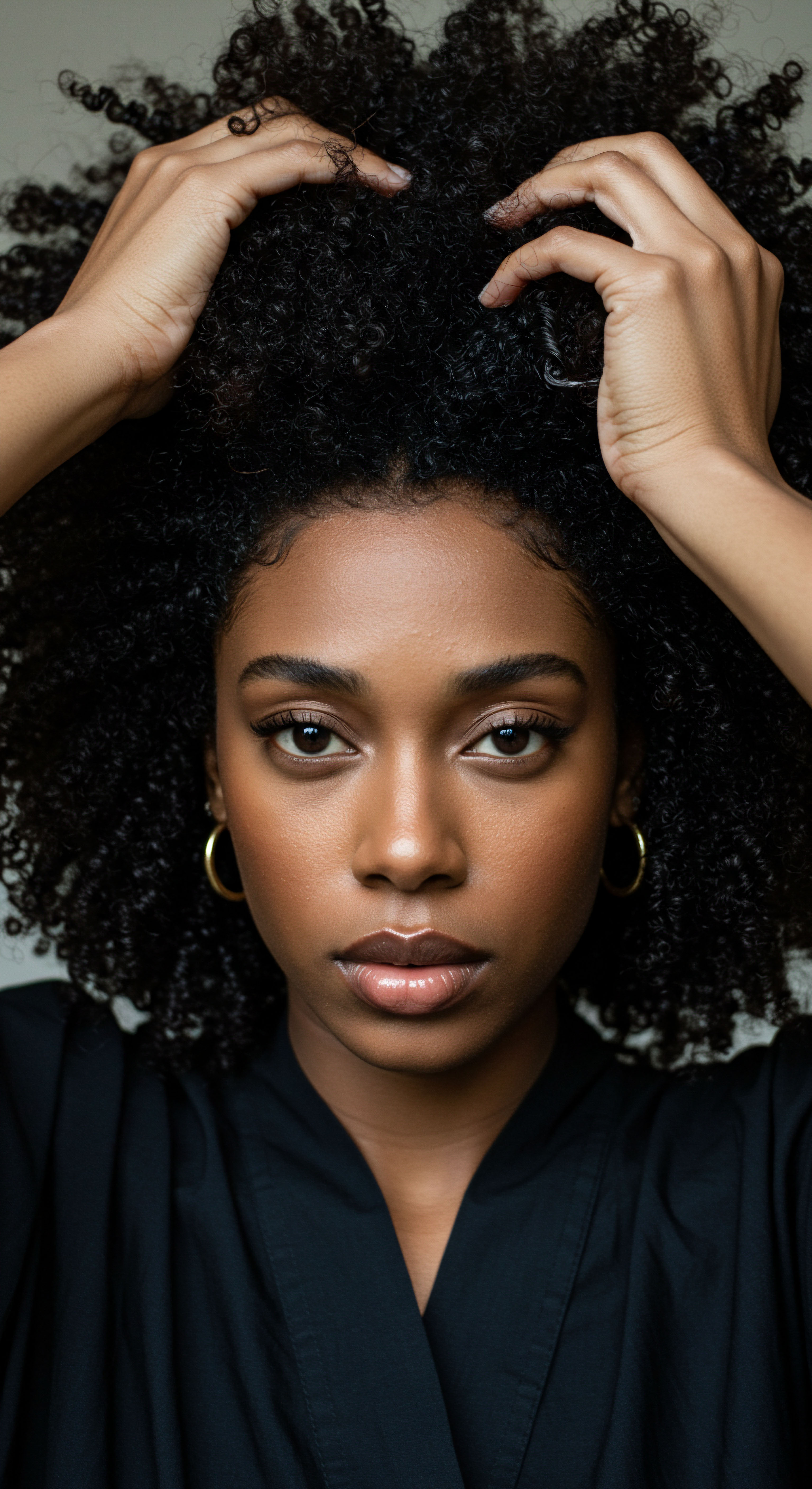
Ritual
Moving from the unseen architecture of the coil to the hands-on care that honors it, we turn our gaze to ritual. Ancestral hair care practices were never merely about superficial adornment; they were deeply rooted in a practical understanding of hair’s needs, often intuitively aligning with principles we now quantify through scientific pH measurements. These traditions, passed down through generations, speak to a profound wisdom, offering gentle guidance on maintaining the hair’s delicate equilibrium.
Consider the widespread use of various plant-based ingredients in traditional African hair care. Many of these natural elements, when prepared and applied, naturally contributed to a healthy pH environment for coils. The practices often involved a sequence of cleansing, conditioning, and sealing, each step contributing to the hair’s overall well-being. This methodical approach, often involving gentle preparations rather than harsh stripping agents, helped to preserve the hair’s inherent moisture and protective outer layer.
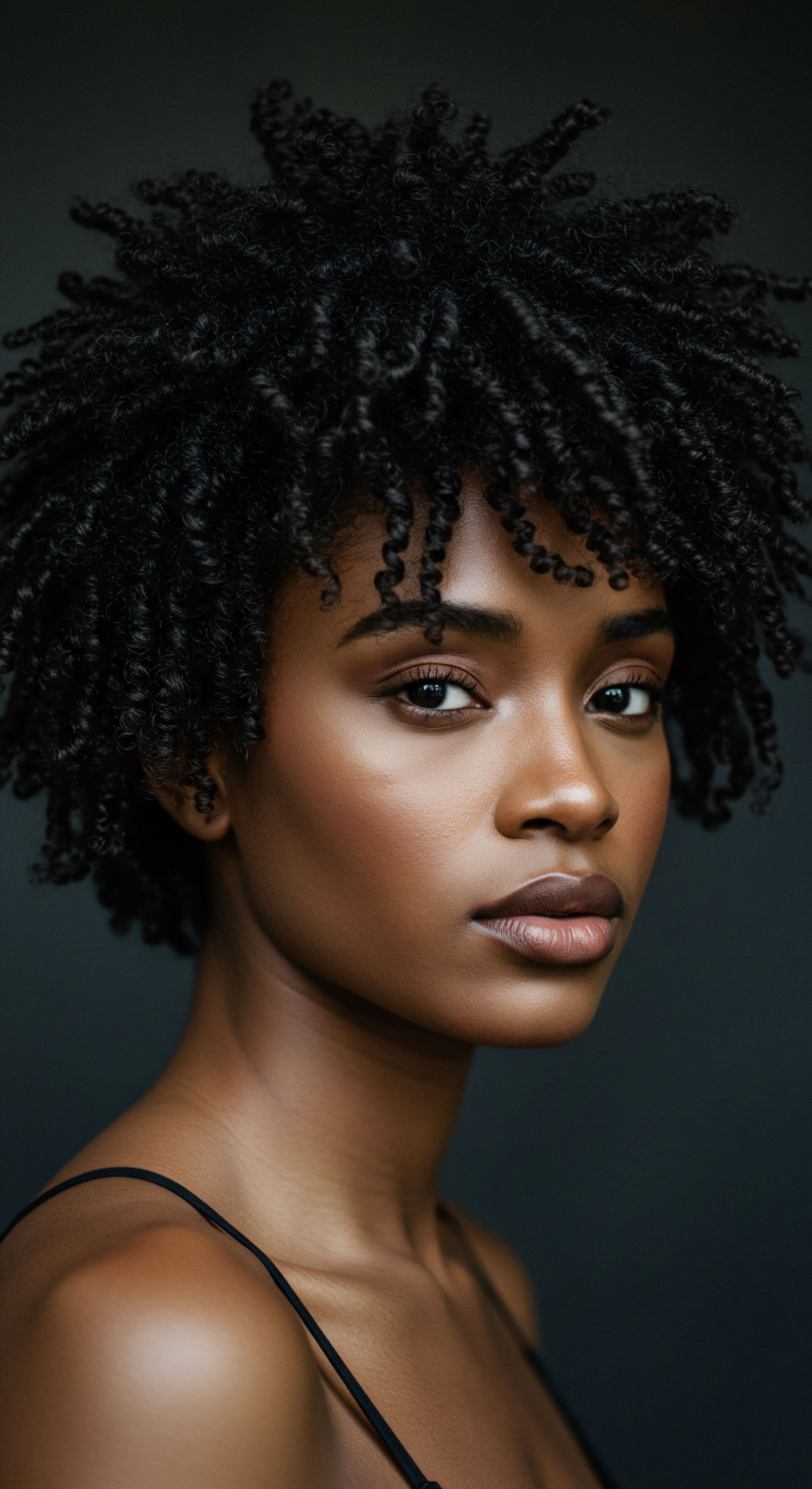
How Did Ancestral Practices Cleanse Coils Gently?
Ancestral cleansing methods frequently employed natural saponins found in plants, which offered a mild lather without the aggressive alkalinity of many modern soaps. For example, the use of Rhassoul Clay, sourced from the Atlas Mountains of Morocco, served as a cleansing agent. While Rhassoul clay itself can be slightly alkaline (with a pH typically between 6.5 and 7.5), its traditional preparation often involved mixing it with acidic components like rosewater or herbal infusions.
This careful combination would have moderated its pH, making it more sympathetic to the scalp and hair’s natural acidity, allowing for effective cleansing without stripping the hair’s protective layer or disrupting its acid mantle. This balance was a subtle art, honed over centuries of observation.
Ancestral practices often intuitively balanced natural ingredients to cleanse and condition coils, preserving their delicate pH.
Beyond cleansing, the application of natural oils and butters was a central ritual. Shea butter, a revered staple, offers rich emollients that help to seal moisture into the hair shaft. While the pH of raw shea butter can vary, many traditional applications involved its use as a post-wash sealant, applied to hair already cleansed with more pH-friendly solutions.
This layering approach helped to lock in moisture and support the cuticle, rather than attempting to alter its state with a single product. Studies indicate that products formulated with shea butter can be pH-balanced, often between 5.0 and 6.0, reinforcing its role in maintaining hair health.
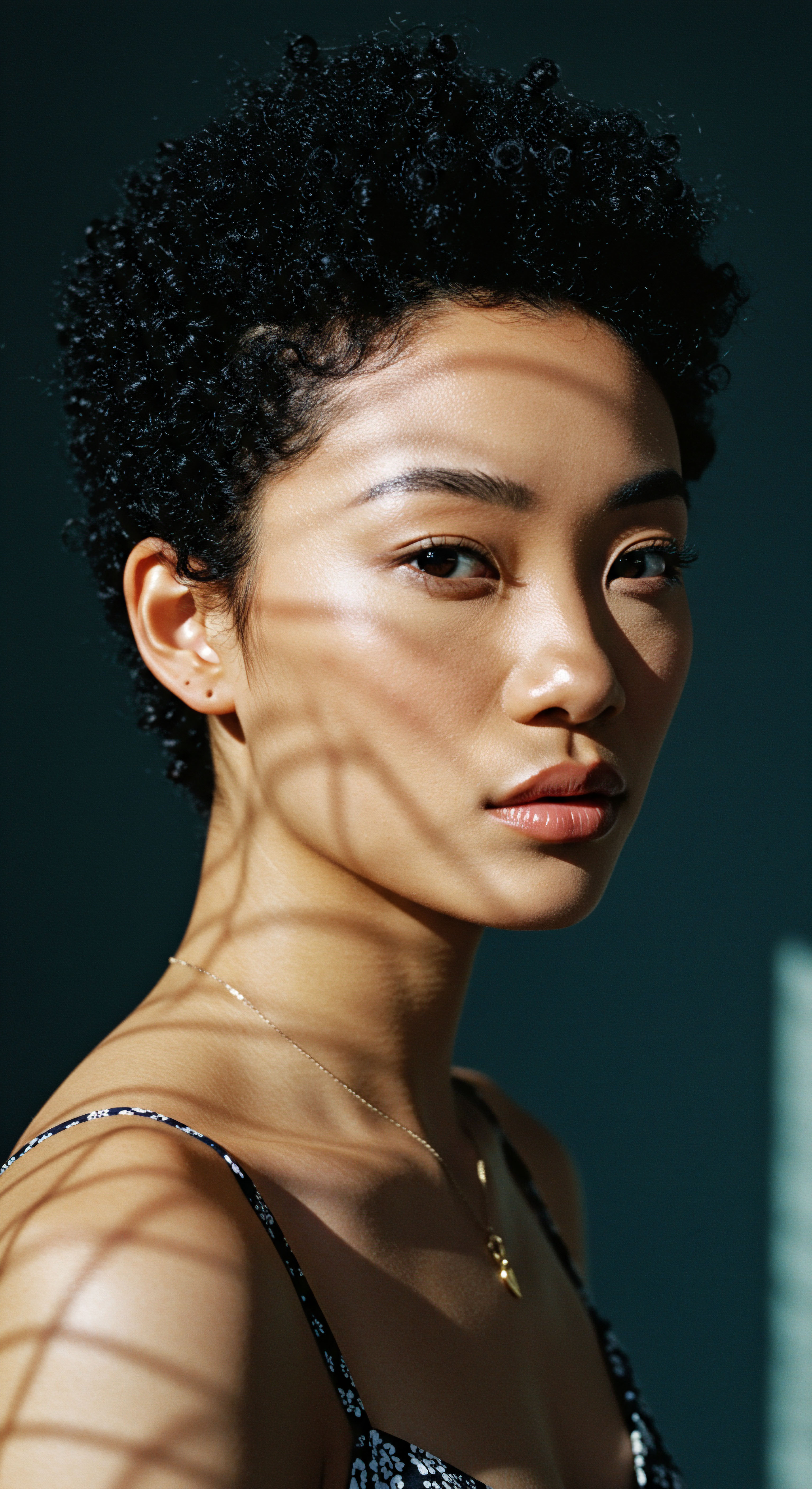
Balancing with Botanicals
The wisdom of using acidic rinses is another prominent feature of ancestral practices. Rinses made from diluted vinegar or certain fruit acids, for instance, would have served to gently close the cuticle after washing, restoring the hair’s natural acidic pH. This practice would have contributed to smoother, shinier hair and reduced tangling, a particular benefit for coily textures. Similarly, ingredients like Hibiscus were historically used for hair care, known for their acidic properties that help maintain scalp pH balance and reduce issues like dryness and irritation.
Consider the ancient practice of using Aloe Vera. This plant, celebrated for its soothing properties, possesses a pH level between 4.5 and 5.5, remarkably similar to the natural pH of the hair and scalp. Its application would have naturally aided in rebalancing the hair and scalp, especially after exposure to harsher elements or less pH-optimized cleansing agents. This alignment with the hair’s natural acidity helps to seal the cuticles, leading to improved moisture retention and shine across all hair textures.
- Aloe Vera Gel ❉ Applied directly or as a component in rinses, its natural acidity helps align with the hair’s optimal pH.
- Rhassoul Clay Preparations ❉ Mixed with acidic liquids to create a balanced, gentle cleansing paste.
- Shea Butter Application ❉ Used as a protective sealant after cleansing to retain moisture and support the hair’s outer layer.
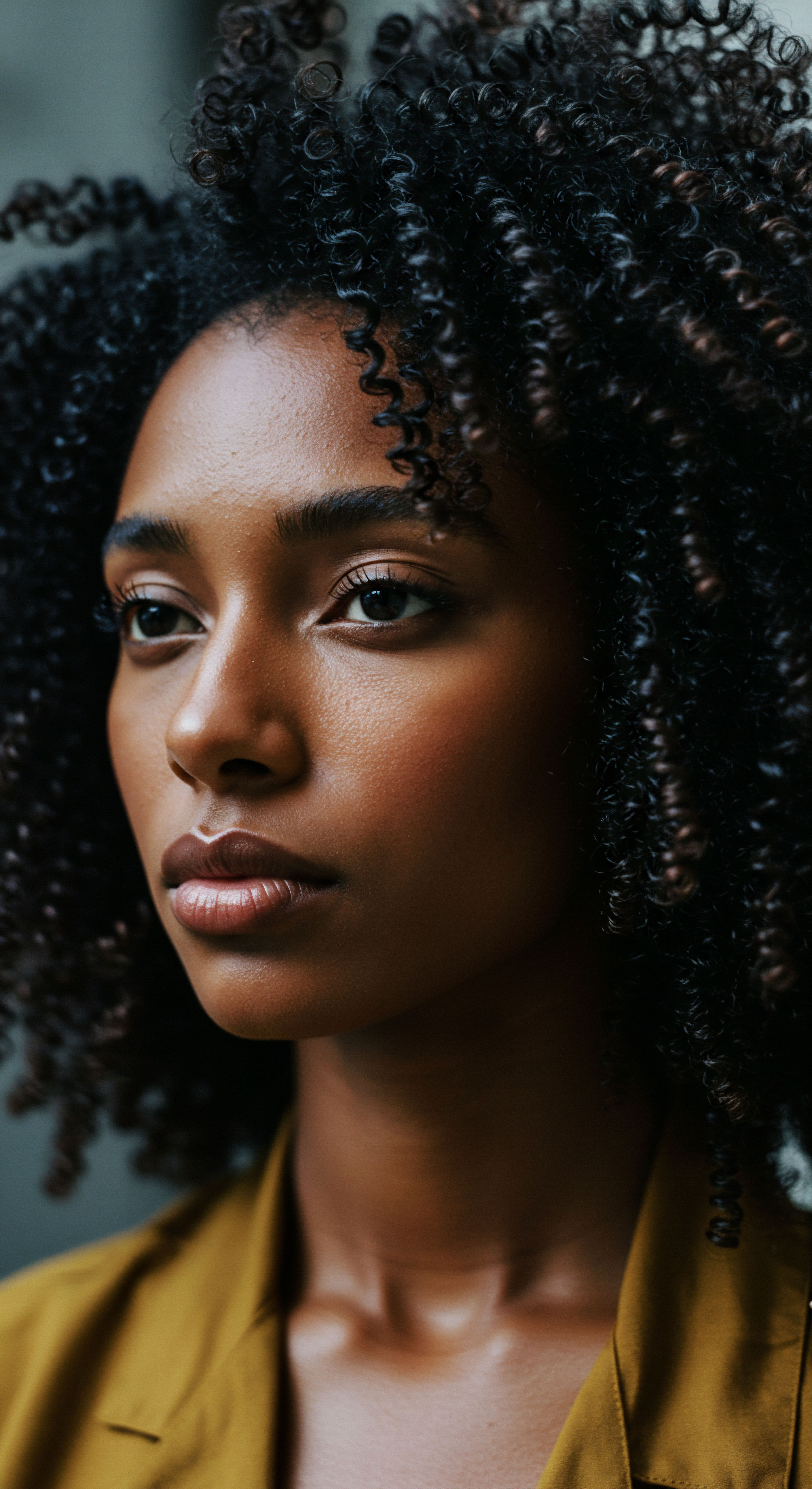
Relay
As we move from the direct applications of ancestral wisdom to a deeper understanding of its scientific underpinnings and broader cultural resonance, the query of pH balance for coils takes on a more profound dimension. It is not simply about what was done, but why it worked, and what this enduring knowledge continues to teach us in a world saturated with modern solutions. How do the insights from past practices inform our contemporary scientific explorations of hair health, particularly regarding the scalp’s microscopic ecosystem?
The connection between ancestral hair care and modern scientific understanding of pH balance is a compelling area of study. The scalp’s microbiome, a complex community of bacteria and fungi, plays a significant role in maintaining scalp health, and its equilibrium is closely tied to pH. A balanced pH supports beneficial microorganisms while deterring the overgrowth of those that can lead to issues like dandruff or irritation. Ancestral practices, through their reliance on natural ingredients and gentle methods, often inadvertently supported this microbial harmony.
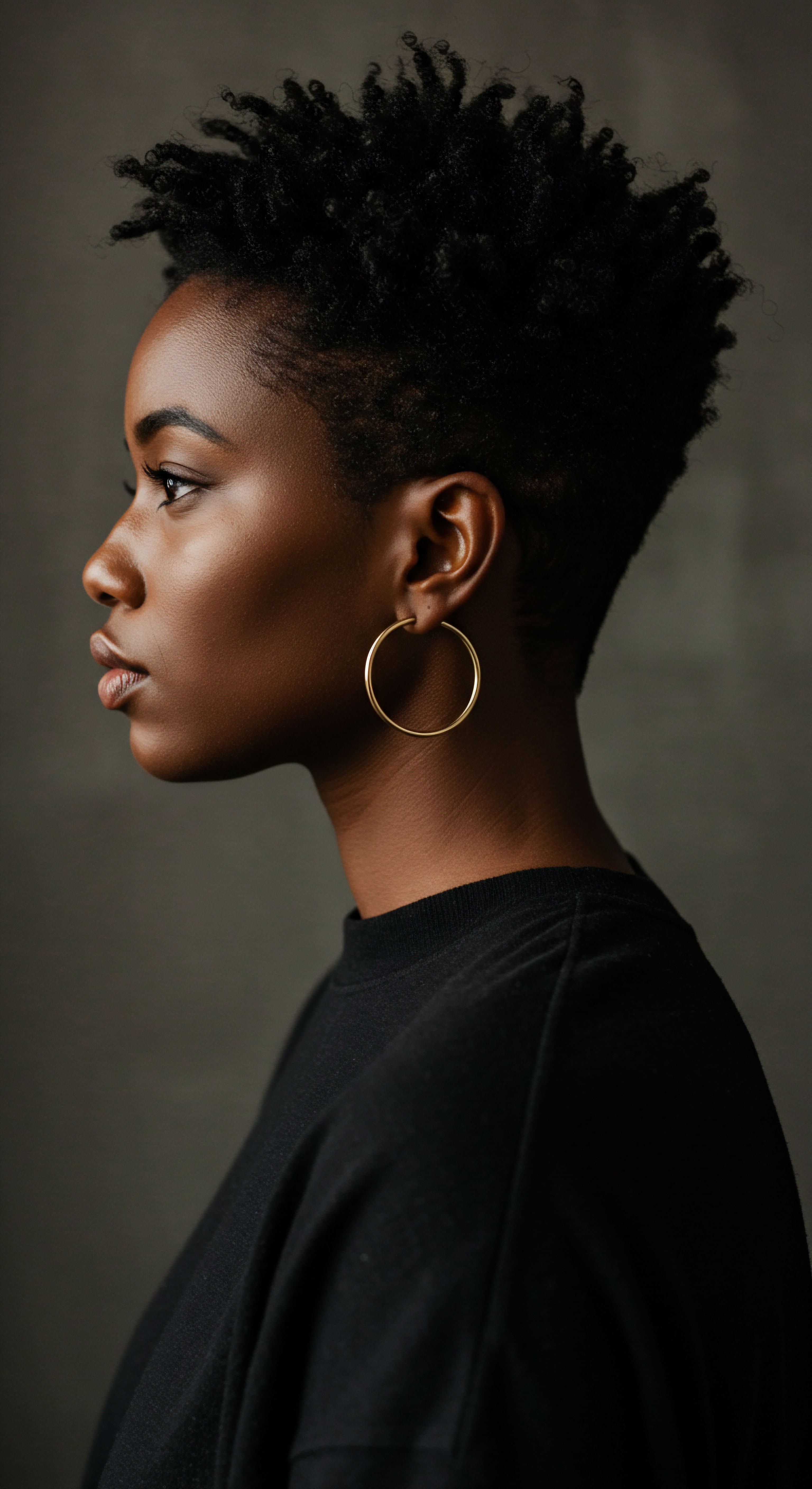
What Does Scalp Microbiome Research Reveal About Ancestral Practices?
Recent scientific investigations into the scalp microbiome have begun to shed light on the intricate relationship between scalp health, microbial diversity, and pH. While direct studies on the scalp microbiome in specific ancestral African populations employing traditional hair care are still an area for more expansive research, broader studies offer valuable insights. For instance, research comparing healthy and dandruff-affected scalps in various populations has identified differences in bacterial and fungal populations, with a higher ratio of Propionibacterium acnes to Staphylococcus epidermidis often associated with a healthy scalp. An unbalanced scalp pH can disrupt this delicate microbial ecosystem, potentially leading to discomfort or hair issues.
The enduring wisdom of ancestral hair care, often intuitive in its pH balancing, aligns with modern scientific insights into scalp microbiome health.
Consider the cultural significance of hair within African communities, where it often symbolizes identity, status, and spirituality. The meticulous care given to coils was not merely for physical appearance; it was a deeply ingrained cultural practice that reflected respect for self and heritage. This holistic view, where hair care was intertwined with overall well-being and cultural expression, inherently promoted practices that supported the hair’s natural state, including its pH.
Chemical relaxers, for instance, which are highly alkaline with pH levels reaching up to 12.0, starkly contrast with this ancestral philosophy, often leading to significant damage and cuticle disruption. The subsequent need for neutralizing shampoos (pH 4.5–6.0) after such treatments underscores the importance of restoring pH balance, a concept ancestral methods addressed proactively with gentler, naturally acidic ingredients.
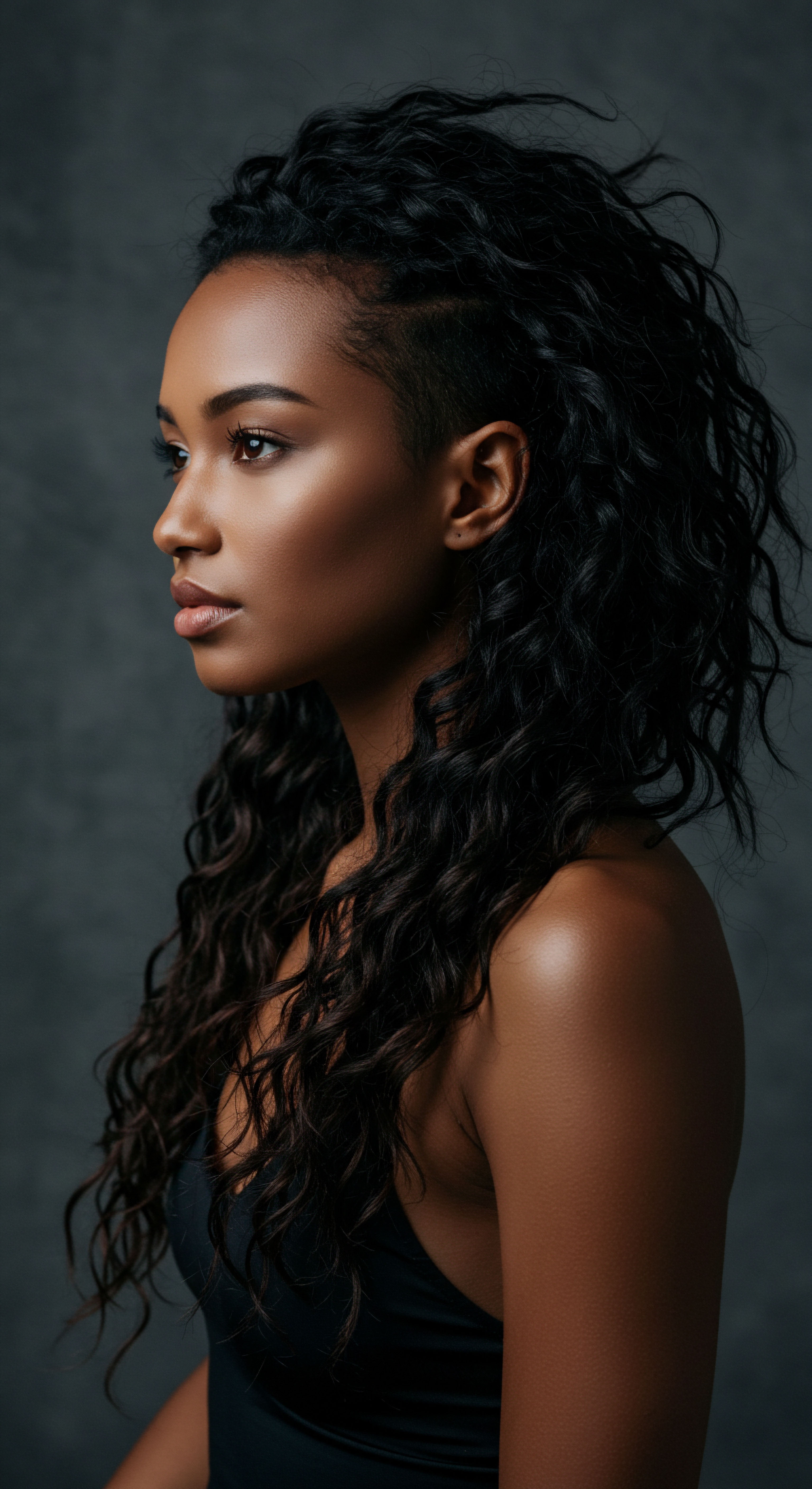
A Look at Historical PH Impact
One powerful illustration of the ancestral understanding of pH, even without explicit scientific terminology, comes from the traditional use of ingredients like Chebe Powder. Hailing from Chad, this blend of herbs, including lavender crotons, is traditionally used to condition and strengthen hair, often applied as a paste. Chebe powder is recognized for its ability to balance the pH of the scalp and possesses anti-inflammatory properties, creating a supportive environment for hair growth and moisture retention between washes. This highlights a deep, empirical understanding of what contributes to a healthy scalp environment, long before the advent of laboratory pH meters.
The careful selection of ingredients, often locally sourced and seasonally available, speaks to a sophisticated, adaptive system of hair care. This system naturally favored elements that worked in harmony with the hair’s biological properties, rather than against them. The historical reliance on substances like hibiscus, which is known for its acidic pH, demonstrates an implicit knowledge of how to close the hair cuticle and impart shine, contributing to both the health and aesthetic of the coils. This is a profound contrast to modern practices that sometimes prioritize quick styling results over long-term hair integrity, often at the expense of pH balance.
| Ingredient Aloe Vera Gel |
| Approximate PH Range 4.5 – 5.5 |
| Traditional Use and PH Benefit Conditioning, soothing, rebalancing scalp pH after washing. |
| Ingredient Rhassoul Clay |
| Approximate PH Range 6.5 – 7.5 (can be adjusted) |
| Traditional Use and PH Benefit Cleansing; often combined with acidic rinses to moderate pH. |
| Ingredient Hibiscus Tea/Extract |
| Approximate PH Range 2.0 – 3.0 (tea) |
| Traditional Use and PH Benefit Acidic rinse to close cuticles, impart shine, and balance scalp pH. |
| Ingredient Chebe Powder |
| Approximate PH Range Not explicitly cited, but known for pH balancing |
| Traditional Use and PH Benefit Scalp conditioning, moisture retention, creating a healthy growth environment. |
| Ingredient Apple Cider Vinegar (diluted) |
| Approximate PH Range 2.0 – 3.0 (undiluted) |
| Traditional Use and PH Benefit Acidic rinse to clarify scalp and close cuticles after alkaline treatments. |
| Ingredient Ancestral users understood the effects of these ingredients on hair vitality. |
The collective wisdom of ancestral hair care, therefore, provides more than just a historical curiosity; it offers a compelling blueprint for maintaining pH balance in coils through a deep respect for natural processes and materials. It stands as a powerful reminder that the path to vibrant, healthy coils often lies in gentle care that aligns with the hair’s inherent biology, a principle that transcends generations and continues to resonate with contemporary scientific understanding.
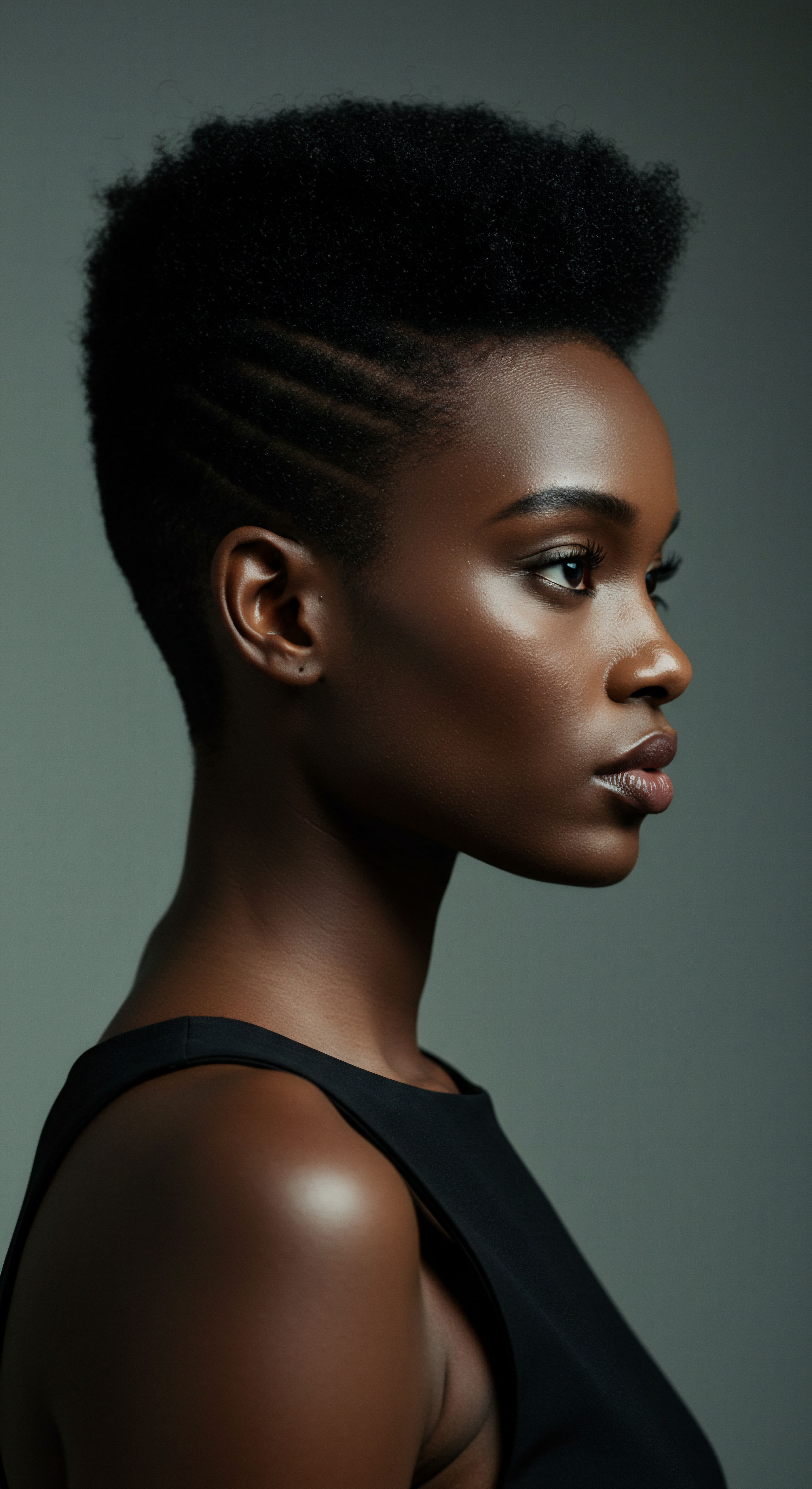
Reflection
As we consider the journey from ancestral wisdom to modern scientific understanding, a clear picture emerges ❉ the health of our coils is deeply intertwined with the delicate balance of pH. The rhythms of ancient care, guided by intuition and observation, often mirrored the very principles that science now quantifies. There is a quiet strength in recognizing that the vibrant coils of our ancestors, maintained with reverence and natural elements, held within their practices a profound knowledge of harmony with the hair’s intrinsic nature.
This enduring connection reminds us that true hair well-being is not about chasing fleeting trends, but about listening to the hair’s quiet language and responding with care that honors its inherent design. It is a timeless invitation to connect with our heritage, understanding that the roots of our hair’s vitality reach back through generations, offering a guiding light for every coil.

References
- Kavella. (2022). Benefits Of Aloe Vera In Hair And Scalp Care.
- Argan Oil Direct. (2020). Guide to Moroccan Rhassoul Clay for Skin Care & Hair.
- Cosmetics Ingredients. PEG-50 Shea Butter (Emulsifier).
- Vera Skincare. Aloe Vera, Lavender & Rosemary Hair Gel.
- Lotioncrafter. Rhassoul Clay | Moroccan Clay Powder for Hair & Skincare.
- FEKKAI. Shea Butter Intense Hair Mask.
- Formulators Hub Kenya. Rhassoul Clay.
- Avimee Herbal. (2024). Hibiscus Hair Oil ❉ Nourishing Your Hair Naturally.
- InStyle Australia. Putting Aloe Vera in Your Hair Can Actually Make It Shinier.
- Voyageur Soap & Candle. Rhassoul Clay.
- Hammam Care. Rhassoul Clay vs Shampoo for Hair Care.
- DIY Cosmetica. (2024). Shea Butter Deep Conditioning Hair Mask.
- Amazon.de. Regenerating Hair Mask I Intensive Building & Repair Care with Shea Butter and Coconut.
- Chicago Public Library. (2021). Celebrating Black Hair ❉ Books for Adults.
- Ezeh, N. (2019). Nicole Ezeh ❉ Aloe Vera Dries Out Your Low Porosity Hair & Here’s Why. BellaNaija.
- Shea Butter. (2024). Shea Butter ❉ The Secret to Hydrated, Natural Hair.
- Stylist. (2022). This new book celebrates the rich cultural history of Black hair.
- McMichael, A. J. (2003). Hair Care Practices in African American Women. Cutis, 72(4), 280-282, 285-289.
- Chemists Corner. (2022). Is hibiscus too acidic for the hair?
- Africa Imports. Traditional African Secrets For Long And Healthy Hair.
- Safic-Alcan. Hair Care through the ages ❉ Inspired by the past, Designed for the future.
- She Reads. (2022). 10 Books On the Evolution of Black Culture Through Hair.
- Fulham Scalp and Hair Clinic. (2021). Hidden Dangers of Common Afro Hair Care Practices.
- VOONO EU. How to use hibiscus?
- St.Botanica. (2024). Hibiscus Powder for Hair Growth ❉ 14 Benefits + Ways To Use Effectively.
- ResearchGate. (PDF) Hibiscus and cornflower – raw materials for natural hair dyeing.
- Rebora, A. & Guarrera, M. (2020). Alopecia and the Microbiome ❉ A Future Therapeutic Target? Actas Dermo-Sifiliográficas, 111(1), 1-6.
- The Times of India. (2025). Aloe Vera for bald spots ❉ The correct way to use and rub Aloe Vera gel on bald patches to regrow hair.
- Khan, S. A. et al. (2023). Natural alternatives from your garden for hair care ❉ Revisiting the benefits of tropical herbs. Heliyon, 9(12), e22409.
- Walker, D. (2020). Examining Afrocentricity and Identity Through the Reemergence and Expression of Natural Hair. Scholar Commons.
- Shin, J. H. et al. (2020). Scalp Microbiome and Sebum Composition in Japanese Male Individuals with and without Androgenetic Alopecia. MDPI.
- Rovingheights Books. The Science of Black Hair.
- Saxena, R. et al. (2018). Comparison of Healthy and Dandruff Scalp Microbiome Reveals the Role of Commensals in Scalp Health. Frontiers in Cellular and Infection Microbiology, 8.
- Sharma, A. & Sharma, M. (2022). Sustainable Use of Traditional Plant Extracts for the Formulation of Herbal Shampoos. International Journal of Current Science Research and Review, 5(1), 14-20.
- Davis-Sivasothy, A. (2011). The Science of Black Hair ❉ A Comprehensive Guide to Textured Hair Care.
- Franbourg, A. et al. (2003). Current research on ethnic hair. Journal of the American Academy of Dermatology, 48(6 Suppl), S115-S119.
- Aburaya, A. et al. (2023). The Genomic Variation in Textured Hair ❉ Implications in Developing a Holistic Hair Care Routine. Cosmetics, 10(4), 107.
- Callender, V. D. et al. (2016). Black women’s hair ❉ the main scalp dermatoses and aesthetic practices in women of African ethnicity. Anais Brasileiros de Dermatologia, 91(6), 720-726.
- Hussain, S. A. et al. (2023). Hair Structure and Care ❉ A Review of Herbal Hair Care Cosmetics. International Journal of Pharmaceutical Sciences Review and Research, 83(1), 22-29.
- Botanica. (2025). Top 10 Natural Ingredients for Promoting Hair Growth.
- Clavaud, C. et al. (2013). The worldwide diversity of scalp seborrhoea, as daily experienced by seven human ethnic groups. International Journal of Cosmetic Science, 35(6), 570-575.
- Lersch, D. (2021). History of Natural Ingredients in Cosmetics. Cosmetics, 8(4), 100.
- Kyei, A. & Hogan, S. (2016). Evolution of skin and hair in African Americans. Seminars in Cutaneous Medicine and Surgery, 35(4), 201-206.
- Erdoğan, B. (2014). Anatomy and Physiology of Hair. In Hair and Hair Diseases. InTech.
- Ruocco, E. et al. (2019). Hair Care Cosmetics ❉ From Traditional Shampoo to Solid Clay and Herbal Shampoo, A Review. Cosmetics, 6(1), 14.
- Loussouarn, G. & de la Mettrie, R. (2007). Shape variability and classification of human hair ❉ a worldwide approach. Human Biology, 79(3), 265-281.
- Draelos, Z. D. (2000). Hair Cosmetics ❉ An Overview. Clinics in Dermatology, 18(3), 253-257.
- Franbourg, A. et al. (2003). What is normal black African hair? A light and scanning electron-microscopic study. Clinical and Experimental Dermatology, 28(6), 649-652.
- University of Georgia. (2008). Understand Hair as an Accessory Organ of the Integumentary System.